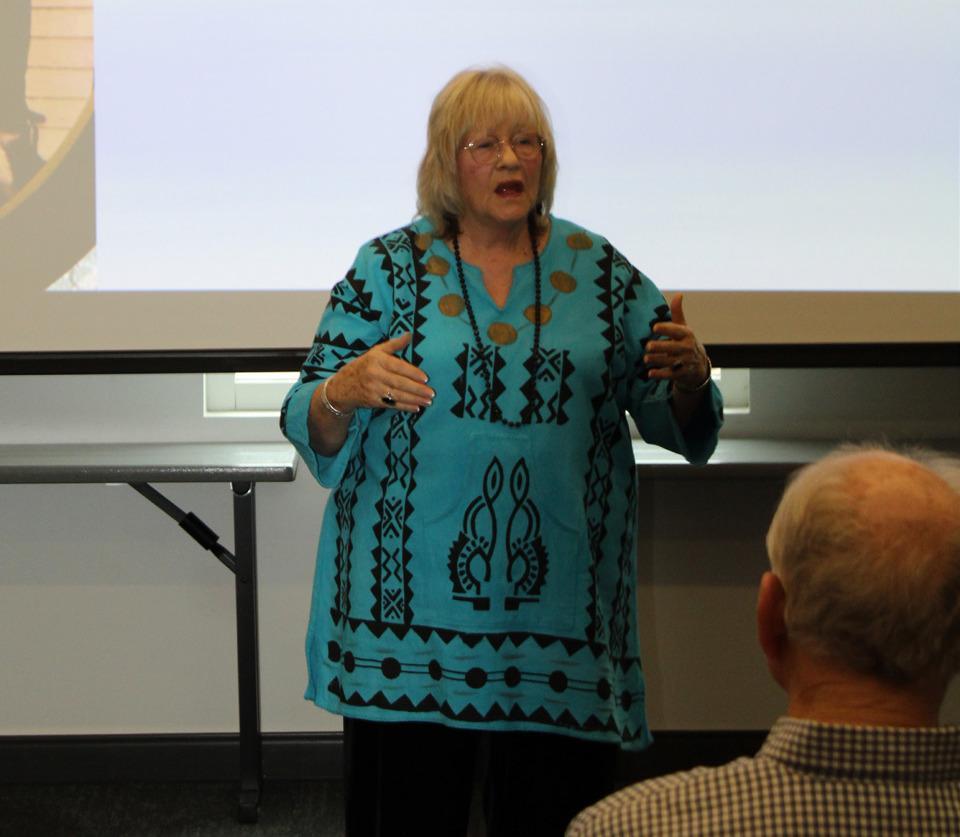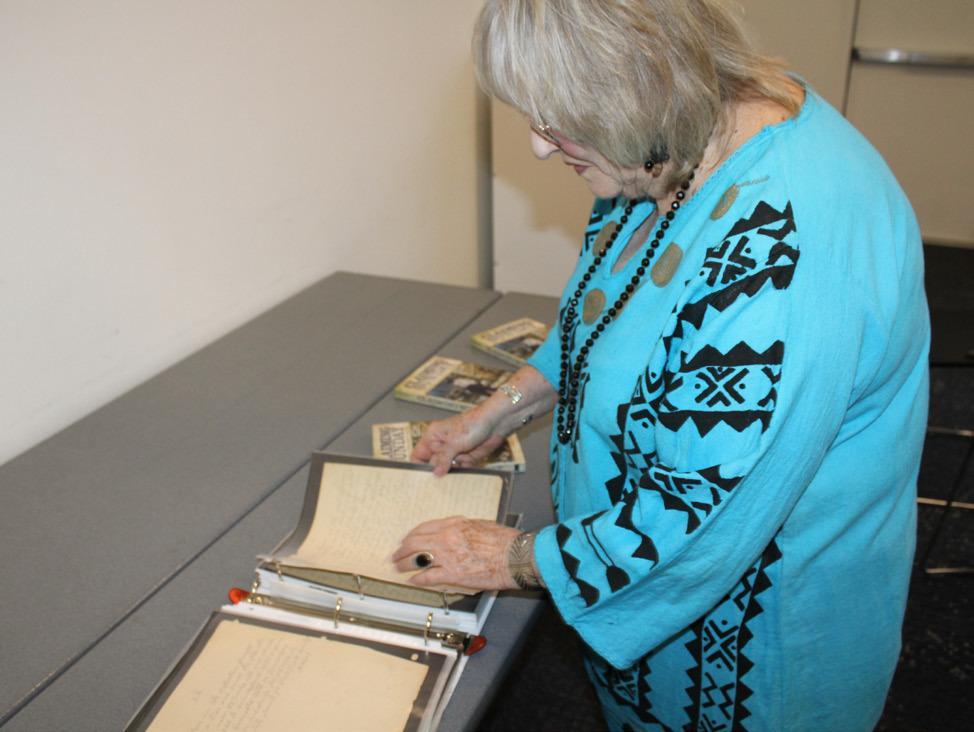

Snider flips through family heirloom documents of David White's, who was Britt Johnson's traveling companion.
Daily Record photo by Shannon West
Sorting fact from fiction: The story of Britt Johnson
SHANNON WEST
STAFF REPORTER
Those with a thirst for knowledge and a limited budget to dedicate to learning will be happy to know that Lifelong Learning, a local nonprofit spearheaded by Director Marianne Reese, provides free educational opportunities. The nonprofit recently held a lecture series that occurred on six consecutive Fridays at the San Marcos Public Library.
Joleene Snider, Texas State University senior lecturer emeritus for the Department of History, taught a course on Britt Johnson — a slave and a Texas frontiersman who made several trips into Native American territory to retrieve people that had been taken during raids — on Feb. 9.
Snider said there are many rumors about Johnson, but she shared with the class the facts that she could confirm.
Snider said there was a portion of Texas that was given via treaty to the Comanches — Comancheria. Then as the Texas frontier grew from 1850 to 1860, the settlers moved further into Comanche territory. Snider said the area with the most frequent Native American raids was the portion that had moved into the Comancheria, where Johnson was located.
“Approximately 361 people were killed in the decade of the 1860s by American Indian raids,” Snider said. “When you consider how sparsely settled that area was … that 361 people starts to add up, starts to be noticeable.”
Johnson’s wife Mary and two of his children were taken and one of his children was killed by a Kiowa war party during the Elm Creek Massacre, which occurred near present- day Newcastle, Tx. The raid resulted in the death of approximately 11 settlers and the capture of six. Snider said the fall of 1864 is when she believes that Johnson made his first trip into Native American territory.
“I think right after the raid, this was Oct. 16 as I recall, I think he packed up, mounted up and left within just a few days following the trail to see if he could find his family,” Snider said. “He came back to the Texas frontier, I believe in late Nov., and he will make another trip soon.”
Snider had a personal connection to the second trip made by Johnson as she is a descendant of his traveling companion, David White, whose son was taken during a raid in the summer of 1864.
“David White was my great, great grandfather,” Snider said. “I grew up with the story of Grandpa Dave and Britt Johnson going after Uncle Lonny. … That’s why I got into this story.”
Snider said Johnson made many expeditions across the Texas frontier in the 1800s, the last of which resulted in his death along with his two traveling companions, Paint Crawford and Dennis Cureton, on Jan. 24, 1871. She said the men killed their horses to hide behind and shot many bullets during the ambush, the number of which are disputed. Despite their efforts, the men were overtaken. Johnson’s body and the body of his dog were found in his horse's cavity. “A party of freighters or soldiers, accounts disagree on which, came upon this spot a day or so later. They buried the bodies,” Snider read from an account of the event. “The burial group also did something else, they spread the word, for Johnson was well known on the Texas frontier. Many knew of his trips into Indian territory and had heard stories about his bravery and exports.”
The lecture series involved six separate and unique topics. The first topic, The Creation and Early History of the U.S. Supreme Court was taught by Snider on Jan. 5. Andrea Banzatti, Texas State University assistant professor of physics, discussed his studies on the formation of terrestrial planets using the NASA James Webb Space Telescope data on Jan. 12. Dr. Steven Beebe, a distinguished professor emeritus of communication for both Texas State University and the Texas State University System at large, lectured on How to Communicate Like C.S. Lewis on Jan. 19. Sarah Hirneisen, Texas State University School of Art and Design lecturer, taught “Mark of the Hand: Sculptural Explorations” on Jan. 26. Kellie Donajkowski, Edwards Aquifer Research and Data Center education program manager, discussed macroinvertebrates in the San Marcos River on Feb. 2.
Although this particular lecture series has concluded, Snider will be teaching a Lifelong Learning course on March 8 at the San Marcos Public Library. In celebration of Women’s History Month, the lecture will be on Seneca Falls, which is known as the birthplace of women's rights, according to the city’s website.











